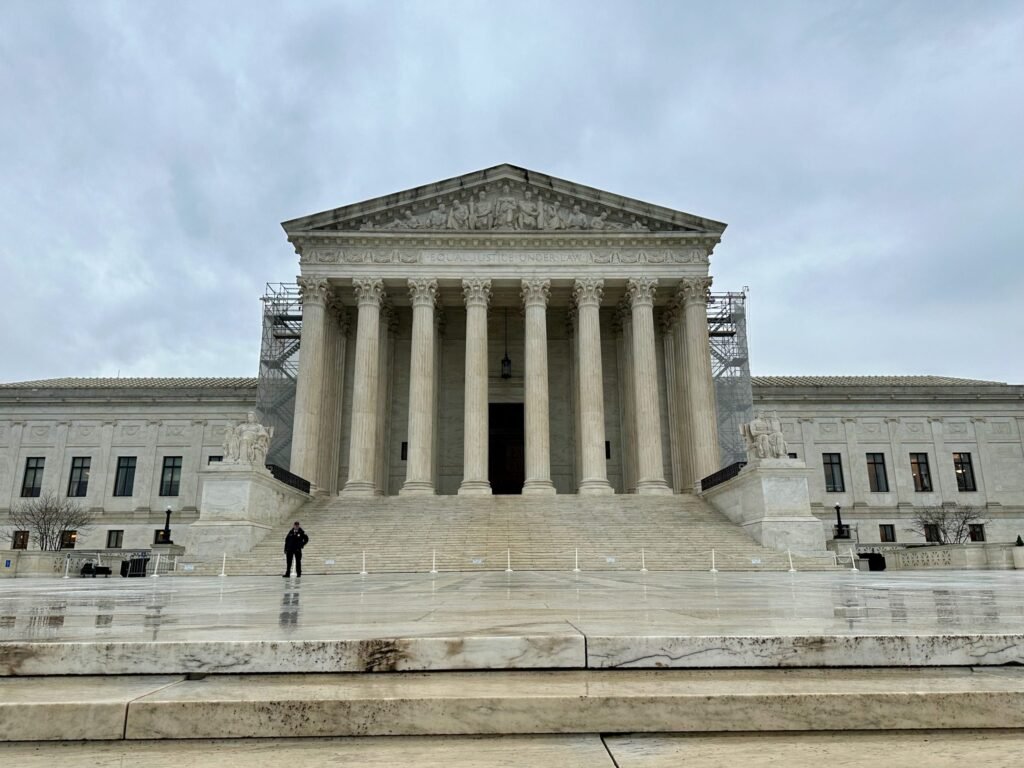ARGUMENT ANALYSIS
on Mar 28, 2024
at 1:15 pm
The justices heard oral arguments in Connelly v. IRS on Wednesday (Katie Barlow)
The justices had been significantly extra subdued within the argument in Connelly v. Internal Revenue Service than they had been on Tuesday, once they confronted the FDA’s therapy of the abortion drug mifepristone. This can be a case concerning the tax therapy of life insurance coverage insurance policies that carefully held companies use to handle the demise of a shareholder. Assume, as is frequent, a small company owned by members of the identical household. When one dies, if the surviving shareholders need to preserve the enterprise within the household, they should provide you with a technique to pay the dying shareholder’s property (usually a surviving partner) for the related share of the corporate. In the event that they don’t need to provide you with the money, or don’t need to promote out to a 3rd social gathering, one method is to have the corporate purchase a life insurance coverage coverage on the shareholder. Then, when the shareholder dies, the proceeds can go to pay the surviving partner (or heirs) for the shares.
The query in Connelly is how a lot the shares are value after the life insurance coverage proceeds are available. On this case, for instance, an organization value a bit lower than $4 million obtained $3 million after the demise of Michael Connelly, which was to be paid to his survivors for his share within the firm. The IRS says that the corporate, as an entire, is now value a bit lower than $7 million, stating that Thomas Connelly (the brother who owns the opposite shares) will personal an organization value virtually $4 million and that Michael’s heirs will get $3 million. Thomas (and Michael’s property) says that the $3 million mustn’t depend in the direction of the worth of the corporate as a result of the corporate is obligated to spend it roughly instantly to repurchase Michael’s shares.
The justices didn’t appear solely sure concerning the case – Justice Brett Kavanaugh, for instance, commented that he discovered it “extraordinarily troublesome.” However as time glided by, they appeared much less and fewer receptive to Connelly’s perspective that the funds mustn’t depend simply because the corporate needed to spend them. Justice Clarence Thomas, for instance, pointedly requested, “[i]f a really purchaser confirmed up the day after Michael died, would Thomas promote the enterprise to him for 3.86 million?” When Kannon Shanmugam (representing Connelly) wandered a bit in his reply, Thomas retorted that “the worth has to go someplace. The three million goes someplace. Does it go into the worth of the remaining shares? And whether it is there, why isn’t the suitable valuation $6.86 million?”
Equally, Justice Sonia Sotomayor emphasised that “[t]he worth of the corporate is the worth at which somebody’s going to personal 100% of the shares of the inventory,” and, for her, that needed to embody the funds that the corporate has from the life insurance coverage coverage.
Justice Neil Gorsuch made an analogous level: “I perceive a hypothetical purchaser of the corporate as an entire would say: ‘Ah, that $3 million goes to inure to my profit as a result of I’m simply going to extinguish the redemption obligation and off we go.’”
The important thing downside for the justices appeared to be their give attention to what occurs to the life insurance coverage proceeds – which don’t go to a 3rd social gathering, however moderately to the surviving family members. For instance, Justice Ketanji Brown Jackson commented that she was “attempting to determine whether or not the proceeds of the life insurance coverage are actually going out once they’re getting used to redeem the shares.”
The justices usually bend over backwards to favor the IRS in tax disputes like this, particularly once they contain (comparatively) rich taxpayers worrying concerning the property tax. So I wouldn’t be in any respect stunned to see a lopsided victory right here for the IRS only a few months from now.

